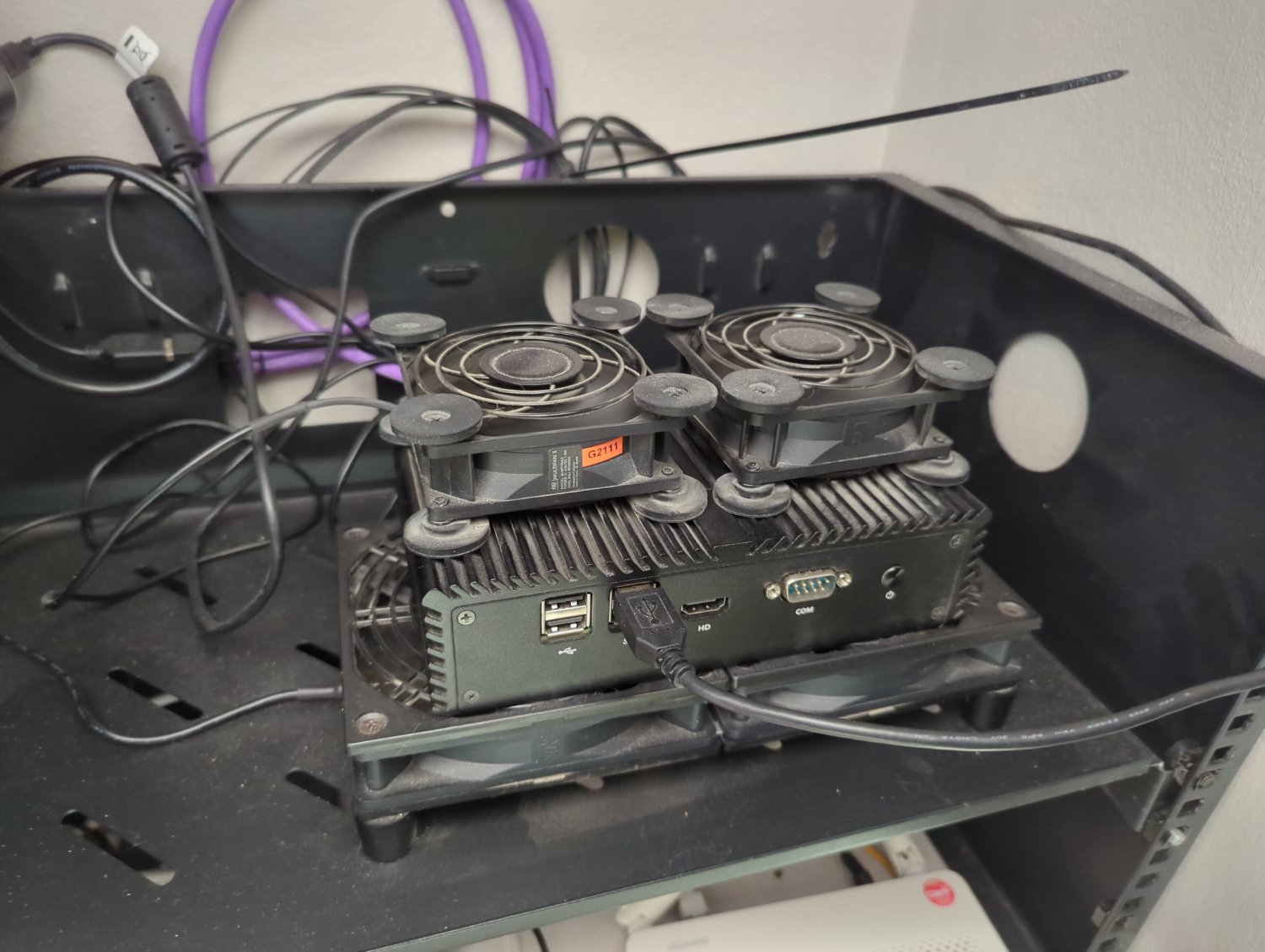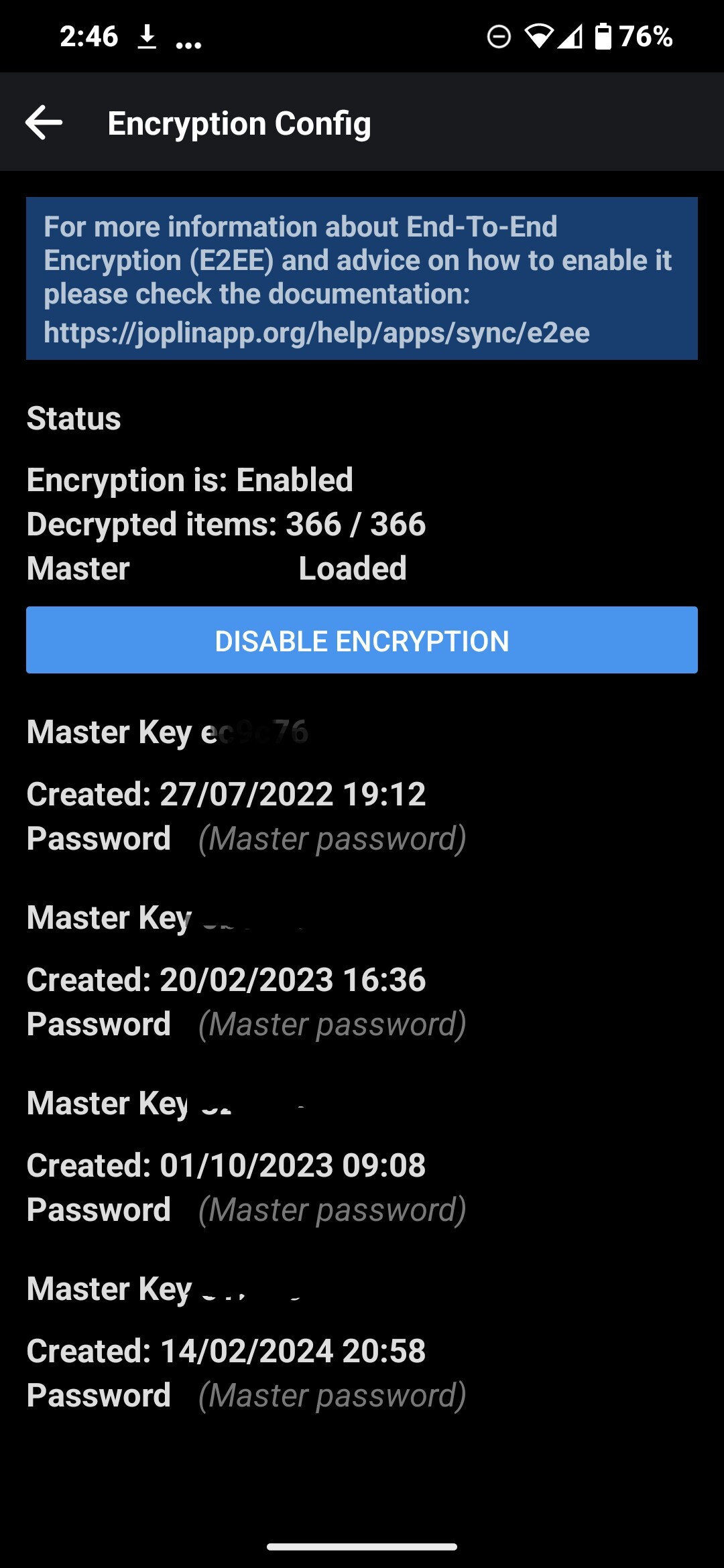I’m genuinely happy I could help. I wish you the best luck with this, and above all, have fun. It is a lot of fun (until my wife starts wanting me to do something the moment I set my mind to start playing with my server or network, 🤪). You evidently have your priorities straight, and that’s great to choose the best course of action for each step. Another hack, in case you’re interested, I got my disks shucked out of some WD external drives that I knew were actually WD Red (3 10TB drives) and I ended up saving about 150 dollars total. But know that of you choose to go this route, you’ll need to disable the 3v pins on each drive, either by covering them with some electric tape, or just remonif the pins altogether (which is what I did). Enjoy buddy.
JJLinux
- 0 Posts
- 41 Comments
My personal opinion is that the devil is in the details. What I mean by this is that it will depend on budget, what you want to do right now plus what you want to do in the future, how willing you are to “build and rebuild” over time, how much physycal space you have to keep your rigs at, etc. I like having full control of my devices, both at the hardware and at the software levels, and I’m well enough financially that I can change whatever I need or want without affecting my family’s quality of life negatively. But I also dont just want to throw money out the window, so I research a lot when I want to add or switch something. Based on this, my preference is to DYI instead of choosing a pre-built server. For what you say you want to do, I think a QNAP or Synology NAS would suffice (I’ve had both, but I like QNAP better, although they are both very similar when you compare them at the same tier levels). However, if and when you decide to up your game, you already spent the money on the pre-built, and it’s not always easy to sell them used to recoup a fee bucks (which is why I chose to give mine to my sister instead of going the “selling it” route.) I speak from my experience, and I understand that what works for me won’t necessarily work for everyone else. But I like letting others know where I made kistaies in hopes that they can avoid them when the time comes. A good example is that you want to go the Raid way, whereas I have UnRaid because I like the array option much better (I think its a more flexible approach), which can also be achieved by using OMV. Your understanding of mybtrain of thought on this subject is exactly right. I personally prefer to have more control on as many components as possible in case I need/want to upgrade (RAM, storage, processor, GPU, TPU) because, in my experience, once I started self-hosting, I find something new I want to add almost daily (80% of the time I just test, end up not liking it, and remove, but this is how I’ve gotten my server to the state it’s in today, trial and error mostly 🤣🤣).
That’s the beauty of self-hosting, choice. This must be one of the very few subjects in which we can disagree on something, and it’s still always good advise regardless of the choice.
It’s not much, but I got a friend from church (die-hard Apple user) to love away from all that crap. He now owns a Pixel 6 Pro running Graphene and is running PopOS on an Intel Mac. Sold his IPhone too.
He says that I am the only person he knows that preaches 2 Gospels 🤣🤣
I guess I misspoke. It became insufficient for me rather quickly. When I started to find new platforms that would allow me to replace the data-hogs out there by self-hosting, any of those devices would have trouble keeping up. I went the so-called “overkill” route and made sure what I built could handle at least double my needs in terms of power, performance and storage capacity. After all this time I have yet to see my processor reach over 20% utilization and my RAM hasn’t hit 25% even once. At the end of the day, we all need to make our own choices. I’m actually glad that your synology has worked so good for you, seriously. After all, it is an investment.
I’m bent on getting as many people as I know to self-host everything possible and to guard their home networks. The garbage out there today is too much.
Some people don’t believe in God, I don’t believe in overkill 🤣🤣
That’s exactly the point. Forking over almost 500 bucks for a low profile but low end computer to put disks into, while making it easier for less technology “risk taking” people to achieve some self-hosting features, when adding about 100 to 150 more you can actually get over 4 times the power any of those things can give you, kind of looks like a huge waste of money to me. I made that mistake once. I outgrew my QNAP in less than a year, so I ended up passing it over to my sister since she doesn’t tinker at all and uses it exclusively for backing up her data, nothing else. I self-host nextcloud, bitwarden, have a cloudflare tunnel set up to avoid opening ports in my PFSense, I host my own Wireguard, AdguardHome, Bitwarden, Joplin, Home Assistant, 2 search engines (SearX and Whoogle), and many things more.
If your ISP comes via Fixed wireless, PPPoE or fiber, I would suggest getting something like this, and setting it up accordingly with PFSense or OPNSense.


 6 VLANs, 2 ISPs on load Balancing and FailOver, 6 switches, 7 APs.
6 VLANs, 2 ISPs on load Balancing and FailOver, 6 switches, 7 APs.The sky’s the limit
I couldn’t agree more. I’ve been running PFsense for about 5 years, great little toy, not 1 single issue. BSD has been paramount in my life for my firewall needs. And I only run Linux on everything else (desktops and servers), but there is not a single FOSS firewall distro out there that can match, much less surpass, a BSD based firewall.
Synology or QNAP will do the trick. However, once you get into the self-hosted rabbit hole, they’ll become insufficient pretty quickly. My suggestion it’s to start with a self-built right with a Ryzen 5 or 7, enough RAM (16GB should suffice at first) and take it from there. That way you have flexibility in terms of what hardware (disks, ram, processor, board, power supply, cooling, etc) and its usually very cost effective in terms of bang-for-the-buck. You can then test OMV, or Ubuntu server, or TrueNAS or anything else, and find your favorite. There are plenty of cases that can meet those needs without breaking the bank.

 1·2 years ago
1·2 years agoI found out about those about 6 months ago only, and it was by chance while going over the UnRaid forum for Frigate, so I decided to do some research. It took me almost 4 months to finally get my paws on one. They were seriously scarce back then, but have been available for a couple of month now. I only got mine finally at the end of November. They seem to be in an availability trend similar to Raspberry Pis.

 1·2 years ago
1·2 years agoI misspoke, and I apologize. I could not recall the term TPU, so I just went with the name of the protocol (CUDA). Nvidia has various TPU devices that use CUDA protocol (like the K80 for example). TPUs (Tensor Processing Units) are coprocessors designed to run some GPU intensive tasks without the expense of an actual GPU unit. They are not a one to one replacement, as they perform calculations in completely different ways.
I believe you would be well served by researching a bit and then making an informed decision on what to get (TPU, GPU or both).

 11·2 years ago
11·2 years agoOK mman, dont pop a vein over this. I’m a hobbyist, with some experience, but a hobbyist nonetheless. I’m speaking from personal experience, nothing else. You may well be right (and thanks for the links, they’re really good for me to learn even more).
I guess, at the end of the day, the OP will need to make an informed decision on what will work for him while adhering to his budget.
I’m glad to be here, because I can help people (at least some times) and learn at the same time.
I just hope the OP ends up with something that’ll fit his needs and budget. I will he adding a K80 to my rig soon, only because I can let go of 50 bucks and want to test it until it burns.
I wish you all a very nice weekend, and keep tweaking, its too Much fun.

 2·2 years ago
2·2 years agoI have absolutely no counter for you on this one, as I’m jot aware of the highest level stuff between manufacturers. And it makes sense. Nvidia has been the goto manufacturer for gaming and developers usually improve their code based on what’s needed to run the best possible on Nvidia hardware. I’ll research Kore on this when I have a chance, this seems to he a very interesting topic. Thank you for pointing this out.

 1·2 years ago
1·2 years agoI absolutely agree with your statement. However, the point in his questions is performance, because of his work with AI. I’d rather Nvidia opensourced their drivers (which is being worked on already, and has been for a while), I think that probably every Linux user wants this to happen already, but that does not change the fact that, even if proprietary drivers are needed for the vest performance, Nvidia is still ahead of anything else out there. But like you, I’m not a fan of having proprietary crap on my devices.

 11·2 years ago
11·2 years agoLet’s get this out of the way. Not a single consumer grade board has more than 16 lanes on 1 PCI slot. With the exception of 2 or 3 very expensive new boards out there, you’ll be hard pressed to find a board with 3 slots giving you a total mas of 28 lanes (16+8+4). So, regardless of TPU or GPU that’s going to be your limit. GPUs are designed as general purpose processors that have to support millions of different applications and software. So while a GPU can run multiple functions at once, in order to do so, it must access registers or shared memory to read and store the intermediate calculation results. And since the GPU performs tons of parallel calculations on its thousands of ALUs, it also expends large amounts of energy in order to access memory, which in turn increases the footprint of the GPU. TPUs are application-specific integrated circuits (ASIC) designed specifically to handle the computational demands of machine learning and accelerate AI calculations and algorithms. They are created as a domain-specific architecture. What that means is that instead of designing a general purpose processor like a GPU or CPU, they were designed as a matrix processor that was specialized for neural network work loads. Since the TPU is a matrix processor instead of a general purpose processor, it removes the memory access problem that slows down GPUs and CPUs and requires them to use more processing power. Get your facts straight and read more before you try to send others on wild goose chases. As I said, the OP already works this field, it shouldn’t be hard for him to find the information and make an educated decision.
Yes Joplin encrypts the notes.